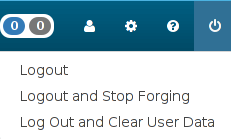Logout Test Cases: In this post, we will discuss the test cases for logout functionality. Every web app has a user account feature that allows the sign-in and sign-out options, and we have to discuss this in the Login Page test case. When you click the sign-out link, cookies get deleted, and the session is cleared.
| Post On: | Test Case For Logout |
| Post Type: | Test Case Template |
| Published On: | www.softwaretestingo.com |
| Applicable For: | Freshers & Experience |
| Have you Joined Our: | Telegram Group |
What is a Logout Page?
Logout pages are a feature of websites typically used to help users leave the website without losing any data. These pages help users log out of their accounts or delete cookies if logged in on multiple devices. A logout page is a mechanism that lets you close your browser, log out of the website, and cleanly exit the site.
This way, you can access the public pages, and secure private pages remain restricted. This is pretty much the work of the log-out link. It redirects you from the private use-only area to the public. Behind the scenes, many small changes happen while you log out.
Logout Test Cases
We are going to take a look at those small changes along with the test scenarios. A few things to consider while testing a logout feature are – security, accessibility, and HTTPS support. These are the things that most modern web apps require for safe and accessible usage.

Here are some of the test cases for logout functionality:
- Make sure the app allows a single sign-off from all the devices.
- Make sure the app lets you sign off for multiple accounts.
- Does the app clear cookies after sign-off?
- Does the app clear the session for the user after signing off?
- Does the app remember the username after signoff?
- Does the app take more time for signoff at different connection speeds?
- Is the sign-off link easy to find?
- Is the sign-off link or button easy to click?
- Is the sign-off link or button positioned as per specification?
- Is the sign-off button or link readable?
- Does the power outage retain the session if not signed off?
- Does the sign-off functionality require face recognition or fingerprint (in the case of the desktop app)?
- Does the sign-off page redirect to the page where it allows login?
- Does the sign-off page allow redirection to the home page?
- Is the sign-off page going to remove the window or tab automatically? (If it’s a bank account sign-off link)
- Does the sign-off button or link work on all devices?
- Is the sign-off button or link broken after clicking?
Accessibility Test Cases For Logout Page
- Is the logout link or button easy to use?
- Is the link or button recognizable?
- Is the link or button easy to find?
- Is the link or button for logout accessible for all users?
Security Logs Test Case For Logout
- Check the logs for the login and logout sessions.
- Check if the logs contain multiple IPs for a single ID simultaneously.
- Check if the logs contain a denial of service attack for the login or log-out.
- Check if the unauthorized IP requests the logout.
- Check if the log has suspicious activity.
HTTPS Login Logout Test Cases

Most of the member areas are secured with HTTPS. However, we must test the code in both productions and on the release server. So, we must check whether the HTTPS remains on the sign-in and sign-out pages. Like the sign-in page, it has to be encrypted as well.
The HTTPS certificate has to be genuine and should be easy to verify. It should not be expired while using the sign-in or sign-out. Ensure the HTTPS certification’s security service provider is genuine and supports a 128-bit SSL connection.
Conclusion
You can use These test cases to test the web app’s sign-off or logout functionality. If it’s a desktop app, the working would be slightly different, and the test cases will be different, too.
I hope this post helps you answer some of the questions related to the manual testing interview. Do let me know if you can think of additional test cases. I’d appreciate it if you shared the post on social media.
